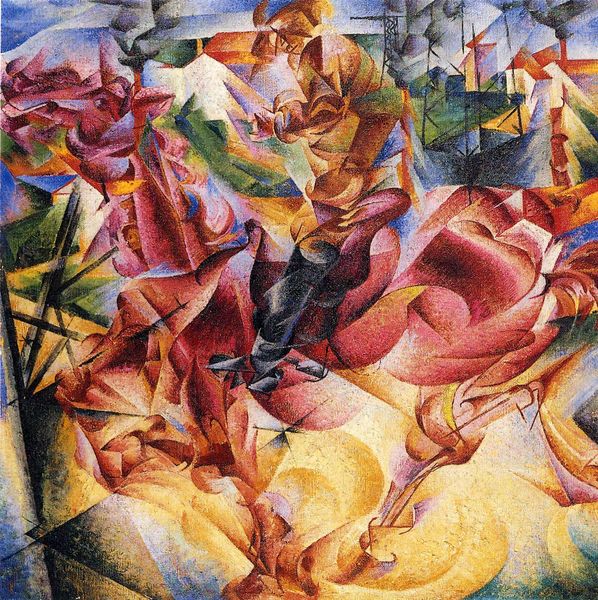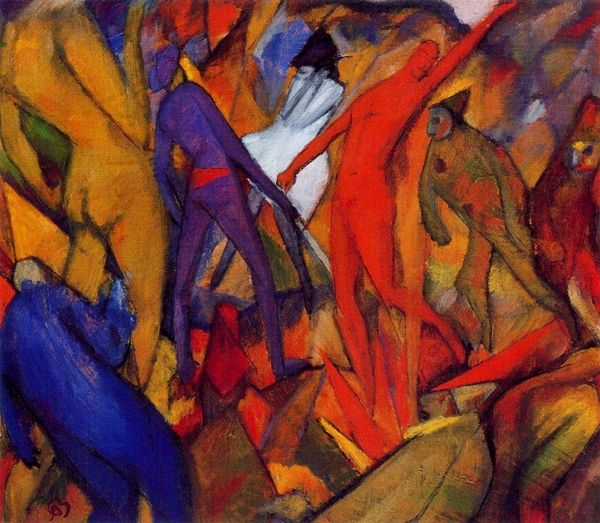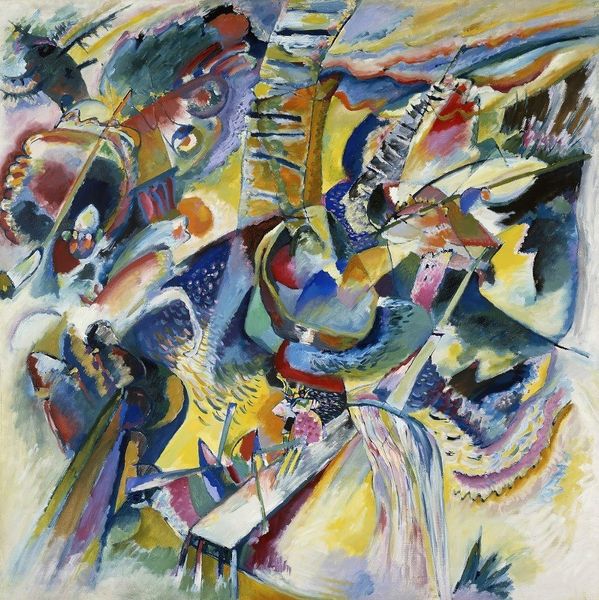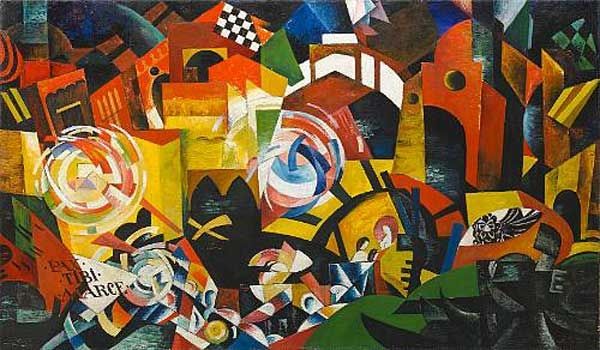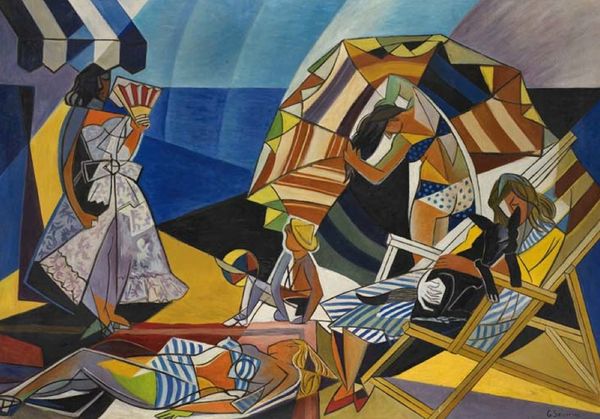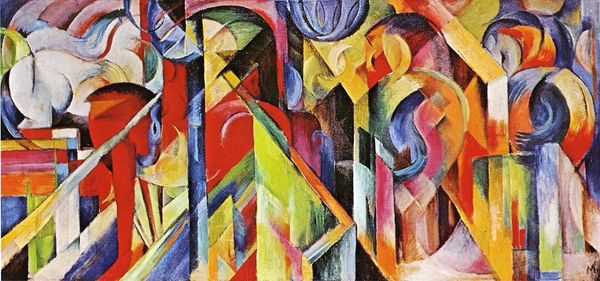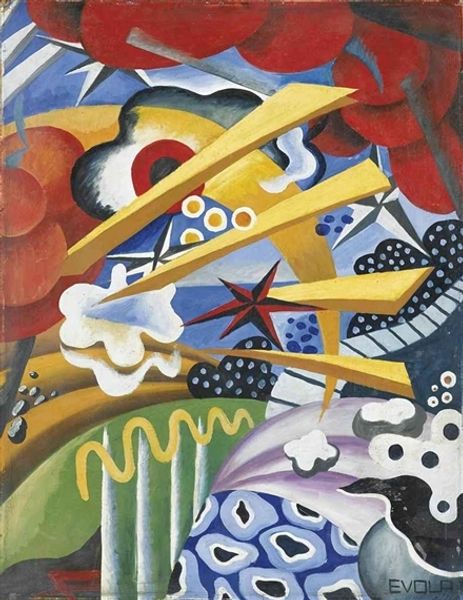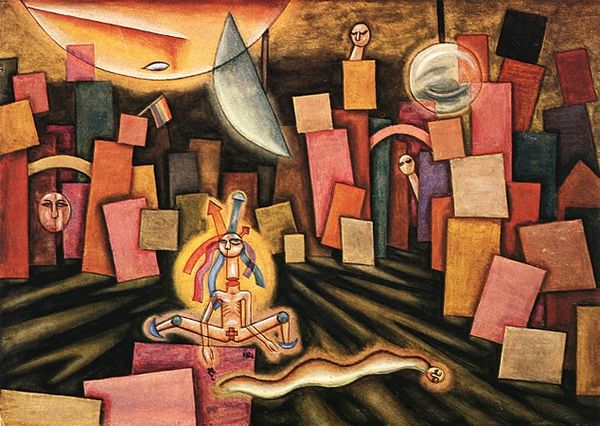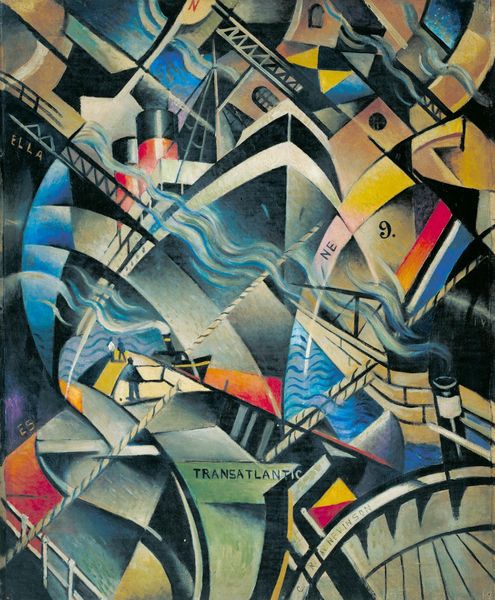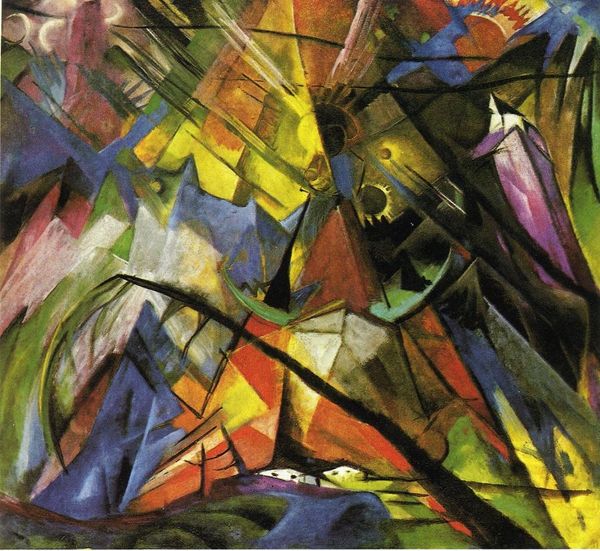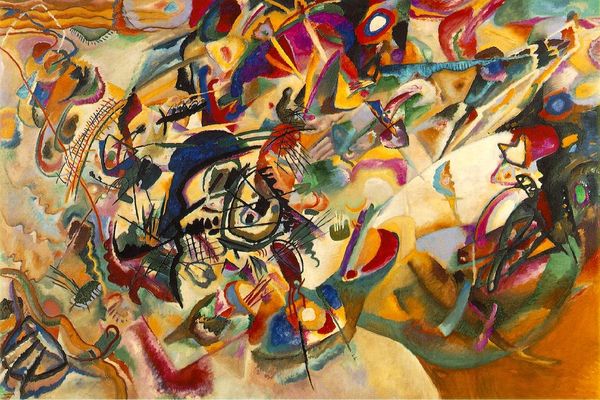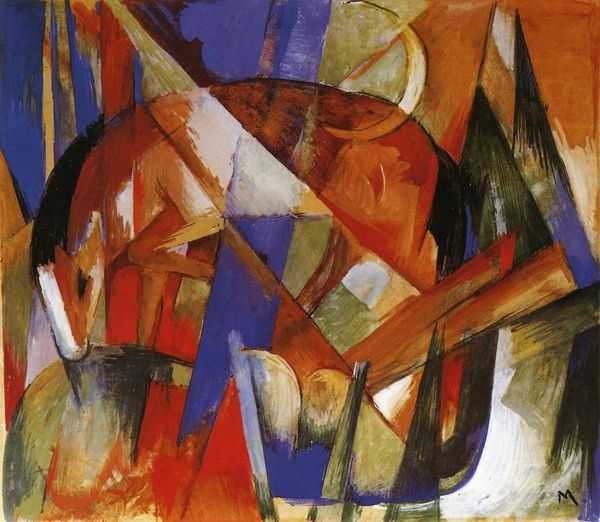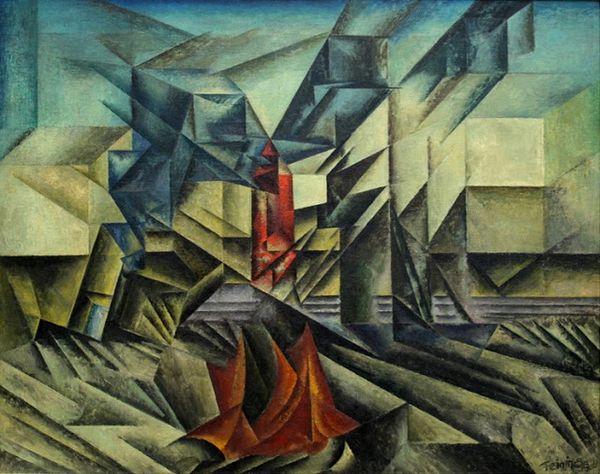
Copyright: Gerardo Dottori,Fair Use
Editor: We're looking at Gerardo Dottori’s "Il Trittico della Velocità: Il Via," painted in 1927 using oil paints. It’s incredibly dynamic, full of these fractured shapes that create this exciting sense of movement. How would you interpret the use of material and composition in this piece? Curator: As a Futurist work, the oil paint becomes a means to capture the dynamism of the machine age. Look closely. Consider how the layers of pigment are applied—broken into planes that almost vibrate. What social and industrial shifts influenced his method? Editor: I see the planes of color depicting buildings and maybe figures involved in some sort of race... were they celebrating something specific? Curator: Exactly! This painting is from a period obsessed with speed, technology and industry after the trauma of the first World War, celebrating not just the spectacle of the race itself but also the infrastructure supporting it. The repetitive geometrical elements create a sort of industrialized landscape. Dottori used oil paint not to replicate reality, but to capture the sensation and impact of new, high-speed materials and construction techniques in a country trying to find its place as a European leader. Editor: That makes a lot of sense. So, the fragmentation is not just stylistic, but a direct reflection of industrial advancement and the restructuring of Italian society through modern architecture? Curator: Precisely! And oil paint was crucial here - its capacity to be layered allowed for a complex interpretation of Italy’s material progress. Editor: I hadn’t considered the medium as part of this expression of Italy's modernization. Thank you! Curator: It goes beyond a simple "picture" into a document that can provide some insight into our past through production and materiality. It is crucial to analyze this type of historical record from this perspective, looking at material production, processes, consumption.
Comments
No comments
Be the first to comment and join the conversation on the ultimate creative platform.
